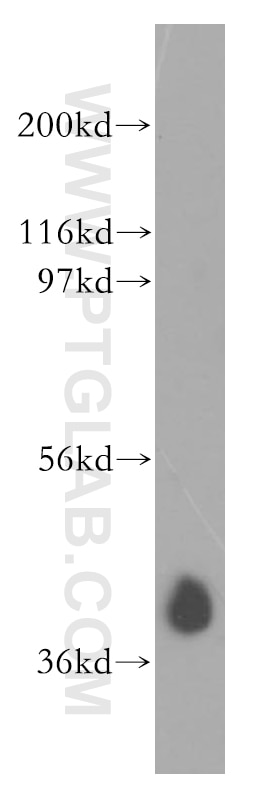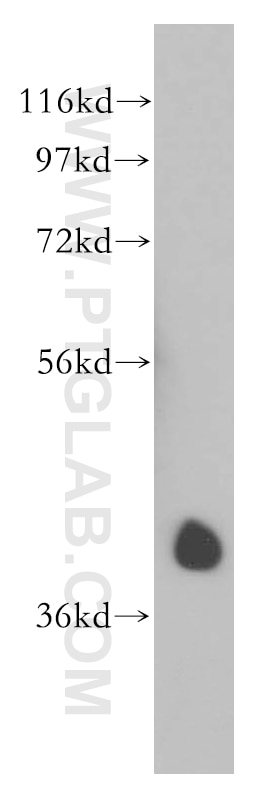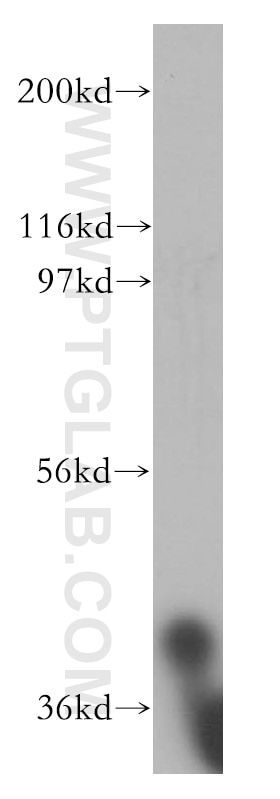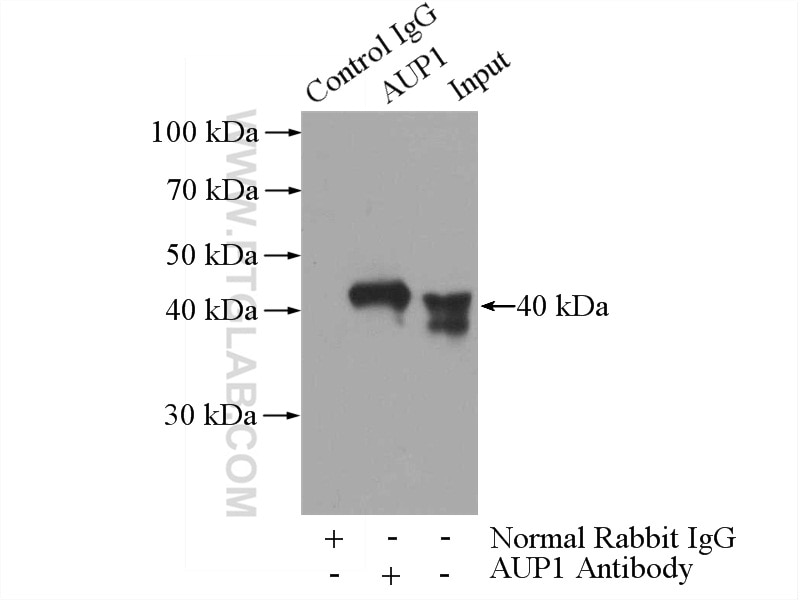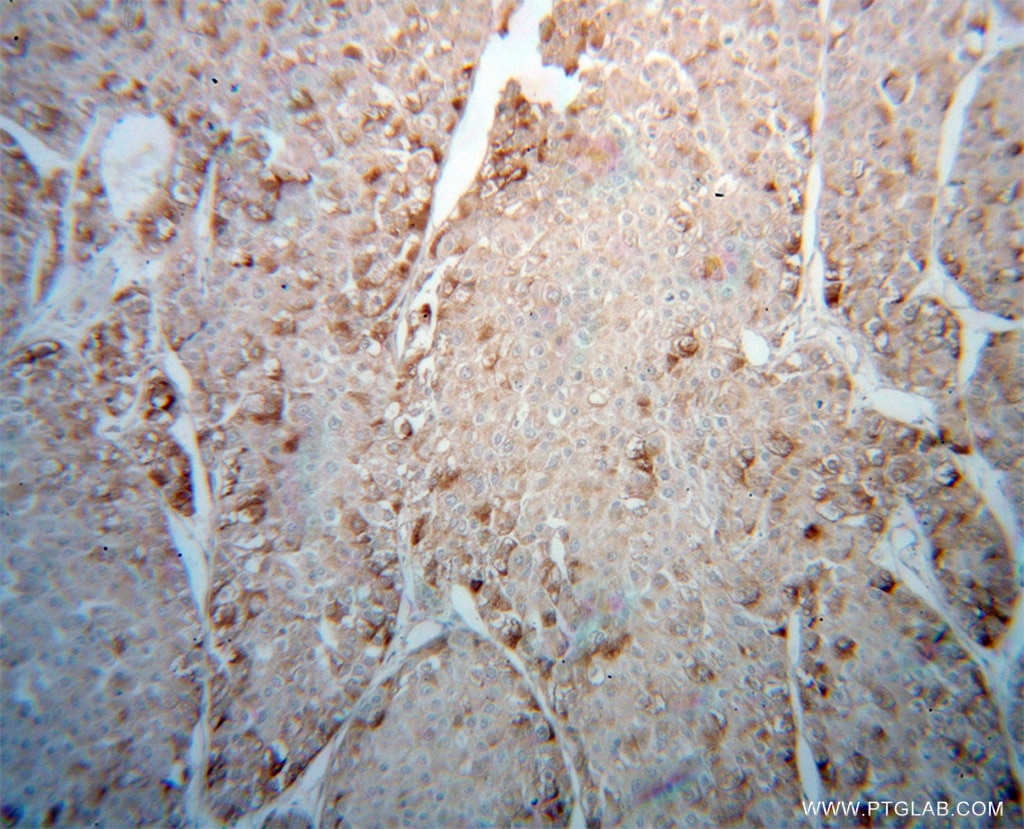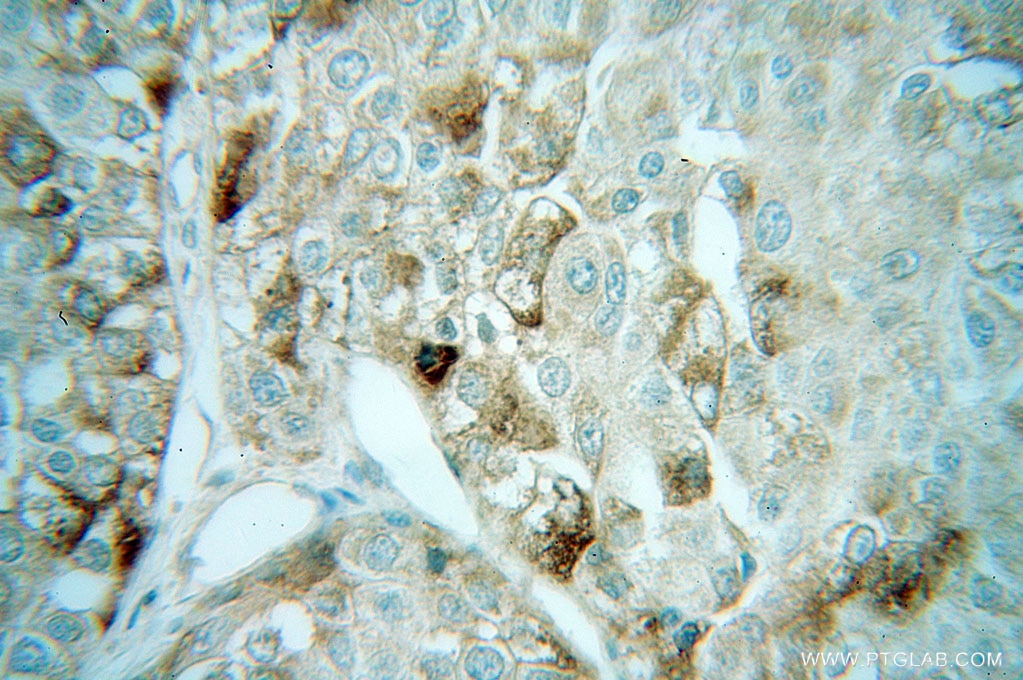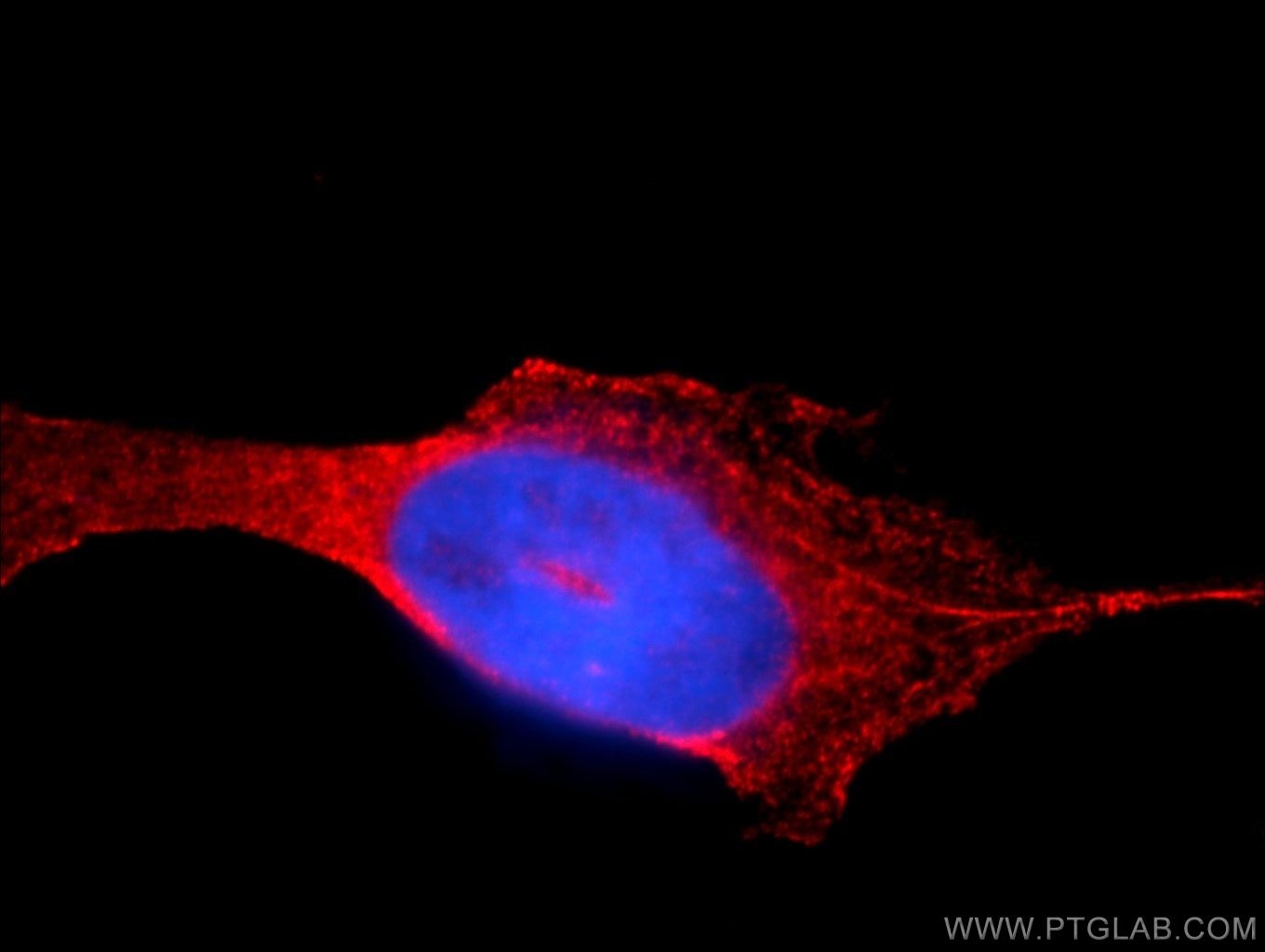AUP1 Polyclonal antibody
AUP1 Polyclonal Antibody for IF, IHC, IP, WB, ELISA
Host / Isotype
Rabbit / IgG
Reactivity
human, mouse, rat
Applications
WB, IP, IHC, IF, ELISA
Conjugate
Unconjugated
Cat no : 13726-1-AP
Synonyms
Validation Data Gallery
Tested Applications
| Positive WB detected in | K-562 cells, HEK-293 cells, Jurkat cells |
| Positive IP detected in | HEK-293 cells |
| Positive IHC detected in | human liver cancer tissue Note: suggested antigen retrieval with TE buffer pH 9.0; (*) Alternatively, antigen retrieval may be performed with citrate buffer pH 6.0 |
| Positive IF detected in | A431 cells |
Recommended dilution
| Application | Dilution |
|---|---|
| Western Blot (WB) | WB : 1:500-1:2000 |
| Immunoprecipitation (IP) | IP : 0.5-4.0 ug for 1.0-3.0 mg of total protein lysate |
| Immunohistochemistry (IHC) | IHC : 1:20-1:200 |
| Immunofluorescence (IF) | IF : 1:10-1:100 |
| It is recommended that this reagent should be titrated in each testing system to obtain optimal results. | |
| Sample-dependent, Check data in validation data gallery. | |
Published Applications
| WB | See 4 publications below |
| IF | See 1 publications below |
Product Information
13726-1-AP targets AUP1 in WB, IP, IHC, IF, ELISA applications and shows reactivity with human, mouse, rat samples.
| Tested Reactivity | human, mouse, rat |
| Cited Reactivity | human |
| Host / Isotype | Rabbit / IgG |
| Class | Polyclonal |
| Type | Antibody |
| Immunogen | AUP1 fusion protein Ag4680 |
| Full Name | ancient ubiquitous protein 1 |
| Calculated Molecular Weight | 416 aa, 45 kDa |
| Observed Molecular Weight | 40 kDa |
| GenBank Accession Number | BC033646 |
| Gene Symbol | AUP1 |
| Gene ID (NCBI) | 550 |
| RRID | AB_2258768 |
| Conjugate | Unconjugated |
| Form | Liquid |
| Purification Method | Antigen affinity purification |
| Storage Buffer | PBS with 0.02% sodium azide and 50% glycerol pH 7.3. |
| Storage Conditions | Store at -20°C. Stable for one year after shipment. Aliquoting is unnecessary for -20oC storage. 20ul sizes contain 0.1% BSA. |
Background Information
AUP1 (Ancient ubiquitous protein 1) is a protein associated with lipid metabolism, which is widely expressed on the surface of ER and Lipid droplets, involved in the degradation of misfolded proteins through autophagy (PMID: 37029364). In addition, AUP1 also controls lipid synthesis as it induces ubiquitination and the subsequent degradation of several key regulators of lipid biosynthesis, such as the cholesterol biosynthetic enzyme 3-hydroxy-3-methylglutaryl-coenzyme A reductase (PMID: 28330944).
Protocols
| Product Specific Protocols | |
|---|---|
| WB protocol for AUP1 antibody 13726-1-AP | Download protocol |
| IHC protocol for AUP1 antibody 13726-1-AP | Download protocol |
| IF protocol for AUP1 antibody 13726-1-AP | Download protocol |
| IP protocol for AUP1 antibody 13726-1-AP | Download protocol |
| Standard Protocols | |
|---|---|
| Click here to view our Standard Protocols |
Publications
| Species | Application | Title |
|---|---|---|
Mol Biol Cell Lipid disequilibrium disrupts ER proteostasis by impairing ERAD substrate glycan trimming and dislocation. | ||
PLoS One Chlamydia trachomatis Infection Leads to Defined Alterations to the Lipid Droplet Proteome in Epithelial Cells. | ||
Mol Biol Cell A VCP inhibitor substrate trapping approach (VISTA) enables proteomic profiling of endogenous ERAD substrates. | ||
Mol Cell Genome-wide CRISPR Analysis Identifies Substrate-Specific Conjugation Modules in ER-Associated Degradation. | ||
Comput Struct Biotechnol J Featured interactome of homocysteine-inducible endoplasmic reticulum protein uncovers novel binding partners in response to ER stress |
